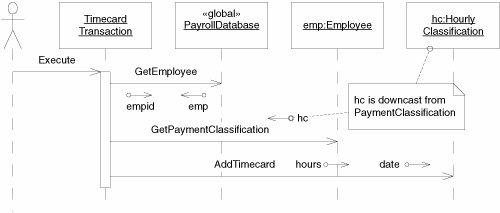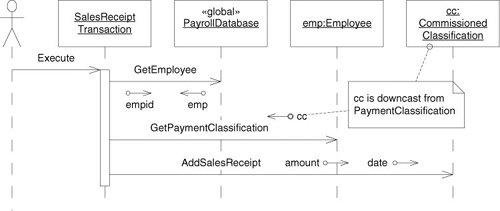Coupling and Encapsulation
| Just as the coupling among classes is managed by encapsulation boundaries in C#, so the couplings among components can be managed by declaring the classes within them public or private. If a class within one component is to be used by another component, that class must be declared public. A class that is private to a component should be declared internal. We may want to hide certain classes within a component to prevent afferent couplings. Classifications is a detailed component that contains the implementations of several payment policies. In order to keep this component on the main sequence, we want to limit its afferent couplings, so we hide the classes that other packages don't need to know about. TimeCard and SalesReceipt are good choices for internal classes. They are implementation details of the mechanisms for calculating an employee's pay. We want to remain free to alter these details, so we need to prevent anyone else from depending on their structure. A quick glance at Figures 27-7 through 27-10 and Listing 27-10 shows that the TimeCardTransaction and SalesReceiptTransaction classes already depend on TimeCard and SalesReceipt. We can easily resolve this problem, however, as shown in Figures 30-4 and 30-5. Figure 30-4. Revision to TimeCardTransaction to protect TimeCard privacy Figure 30-5. Revision to SalesReceiptTransaction to protect SalesReceipt privacy |
EAN: 2147483647
Pages: 272